| Solar eclipse of January 25, 1944 | |
|---|---|
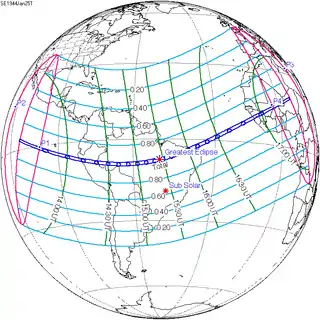 Map | |
| Type of eclipse | |
| Nature | Total |
| Gamma | 0.2025 |
| Magnitude | 1.0428 |
| Maximum eclipse | |
| Duration | 249 sec (4 m 9 s) |
| Coordinates | 7°36′S 50°12′W / 7.6°S 50.2°W |
| Max. width of band | 146 km (91 mi) |
| Times (UTC) | |
| Greatest eclipse | 15:26:42 |
| References | |
| Saros | 130 (48 of 73) |
| Catalog # (SE5000) | 9384 |
A total solar eclipse occurred on Tuesday, January 25, 1944. A solar eclipse occurs when the Moon passes between Earth and the Sun, thereby totally or partly obscuring the image of the Sun for a viewer on Earth. A total solar eclipse occurs when the Moon's apparent diameter is larger than the Sun's, blocking all direct sunlight, turning day into darkness. Totality occurs in a narrow path across Earth's surface, with the partial solar eclipse visible over a surrounding region thousands of kilometres wide. Totality was visible from Peru, Brazil, British Sierra Leone (today's Sierra Leone), and French West Africa (the parts now belonging to Guinea, Mali, Burkina Faso and Niger, including Guinean capital Conakry). At greatest eclipse, the Sun was 78 degrees above horizon (just 12 degrees from zenith).
Related eclipses
Solar eclipses 1942–1946
This eclipse is a member of a semester series. An eclipse in a semester series of solar eclipses repeats approximately every 177 days and 4 hours (a semester) at alternating nodes of the Moon's orbit.[1]
Note: The partial solar eclipse on September 10, 1942 occurs in the previous lunar year eclipse set.
| Solar eclipse series sets from 1942–1946 | ||||
|---|---|---|---|---|
| Ascending node | Descending node | |||
| 115 | August 12, 1942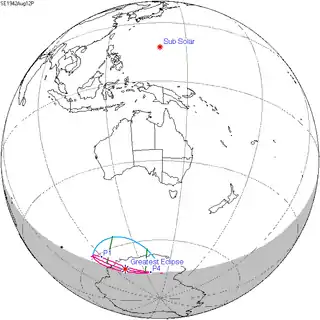 Partial |
120 | February 4, 1943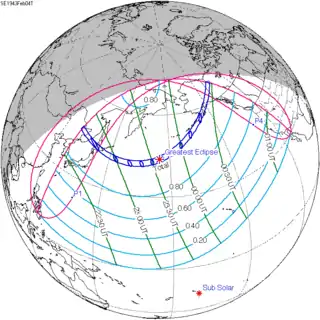 Total | |
| 125 | August 1, 1943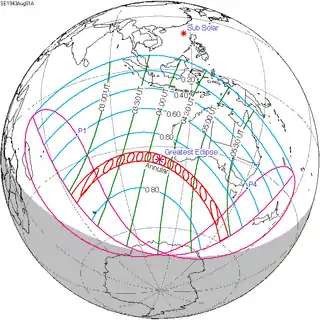 Annular |
130 | January 25, 1944 Total | |
| 135 | July 20, 1944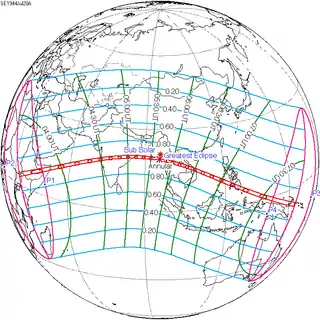 Annular |
140 | January 14, 1945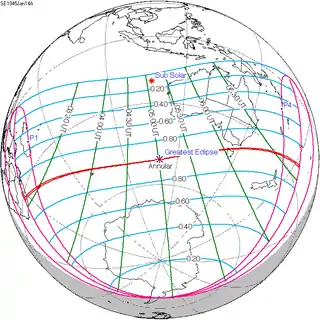 Annular | |
| 145 | July 9, 1945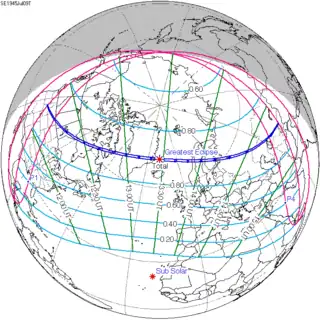 Total |
150 | January 3, 1946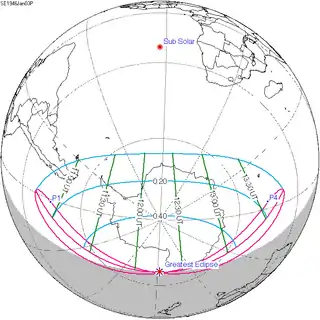 Partial | |
| 155 | June 29, 1946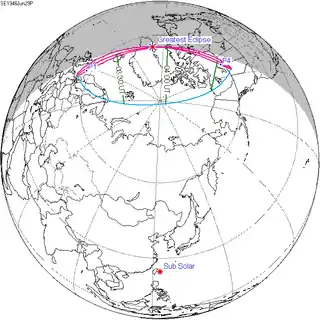 Partial | |||
Saros 130
This eclipse is a part of Saros cycle 130, repeating every 18 years, 11 days, containing 73 events. The series started with partial solar eclipse on August 20, 1096. It contains total eclipses from April 5, 1475 through July 18, 2232. There are no annular eclipses in the series. The series ends at member 73 as a partial eclipse on October 25, 2394. The longest duration of totality was 6 minutes, 41 seconds on July 11, 1619. All eclipses in this series occurs at the Moon’s descending node.[2]
| Series members 43–56 between 1853 and 2300 | ||
|---|---|---|
| 43 | 44 | 45 |
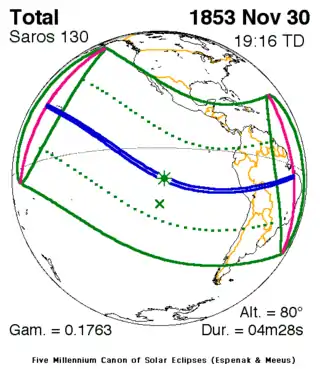 November 30, 1853 |
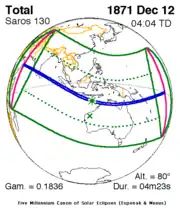 December 12, 1871 |
 December 22, 1889 |
| 46 | 47 | 48 |
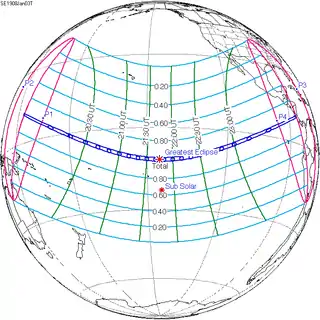 January 3, 1908 |
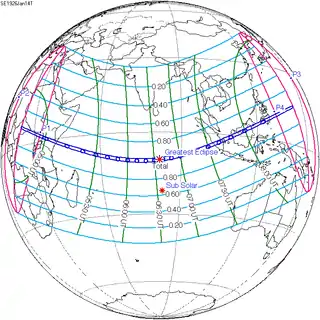 January 14, 1926 |
 January 25, 1944 |
| 49 | 50 | 51 |
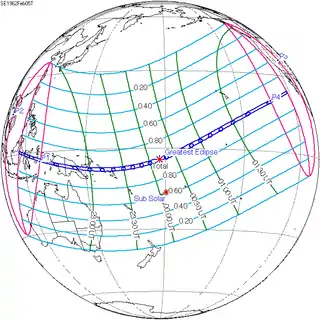 February 5, 1962 |
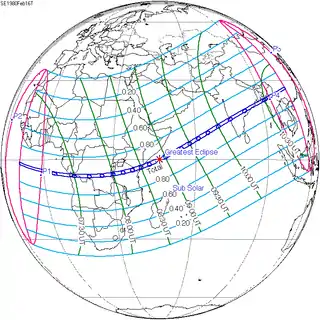 February 16, 1980 |
 February 26, 1998 |
| 52 | 53 | 54 |
 March 9, 2016 |
 March 20, 2034 |
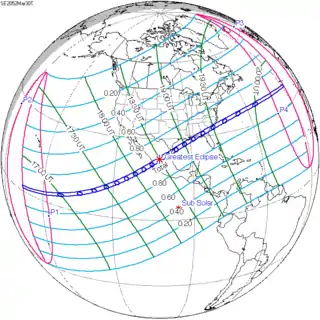 March 30, 2052 |
| 55 | 56 | 57 |
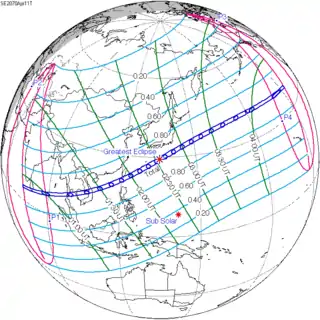 April 11, 2070 |
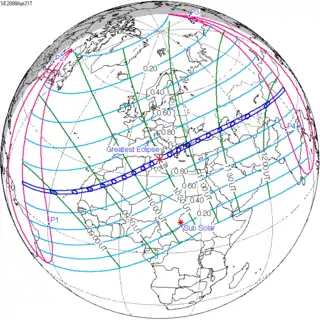 April 21, 2088 |
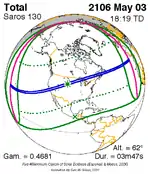 May 3, 2106 |
| 58 | 59 | 60 |
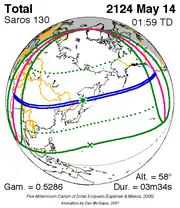 May 14, 2124 |
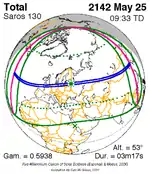 May 25, 2142 |
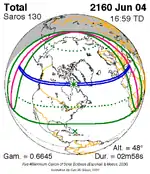 June 4, 2160 |
| 61 | 62 | 63 |
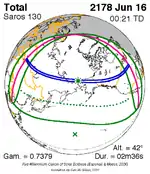 June 16, 2178 |
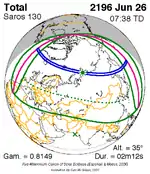 June 26, 2196 |
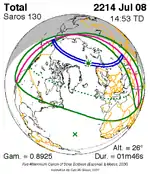 July 8, 2214 |
| 64 | 65 | 66 |
 July 18, 2232 |
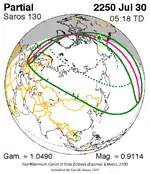 July 30, 2250 |
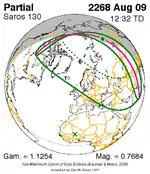 August 9, 2268 |
| 67 | ||
 August 20, 2286 | ||
Metonic series
The metonic series repeats eclipses every 19 years (6939.69 days), lasting about 5 cycles. Eclipses occur in nearly the same calendar date. In addition, the octon subseries repeats 1/5 of that or every 3.8 years (1387.94 days).
| 22 eclipse events, progressing from north to south between April 8, 1902 and August 31, 1989: | ||||
|---|---|---|---|---|
| April 7–8 | January 24–25 | November 12 | August 31-September 1 | June 19–20 |
| 108 | 114 | 116 | ||
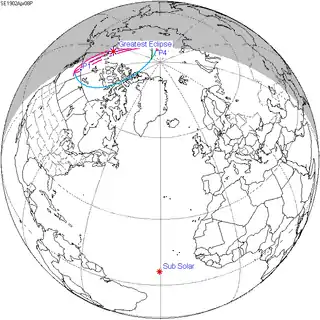 April 8, 1902 |
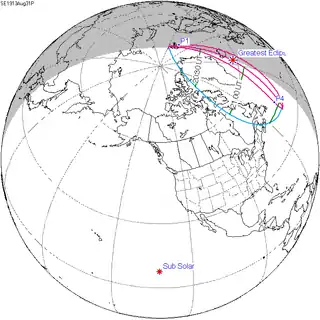 August 31, 1913 |
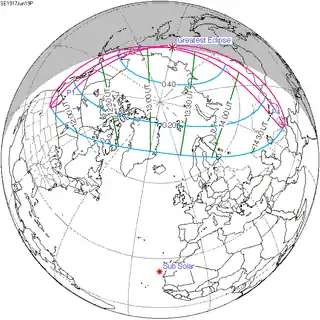 June 19, 1917 | ||
| 118 | 120 | 122 | 124 | 126 |
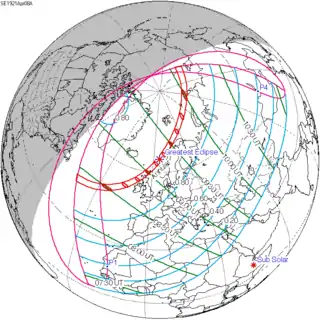 April 8, 1921 |
 January 24, 1925 |
 November 12, 1928 |
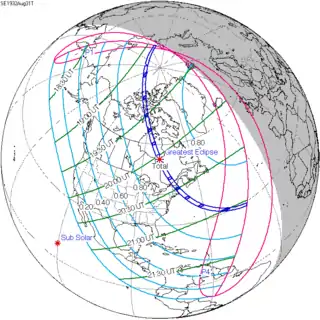 August 31, 1932 |
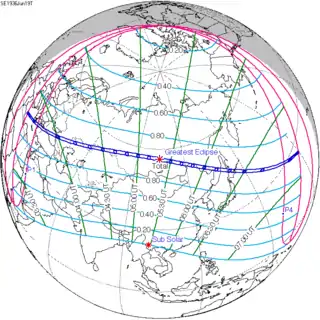 June 19, 1936 |
| 128 | 130 | 132 | 134 | 136 |
 April 7, 1940 |
 January 25, 1944 |
 November 12, 1947 |
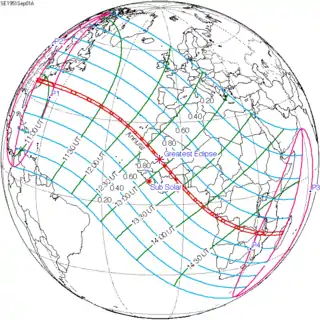 September 1, 1951 |
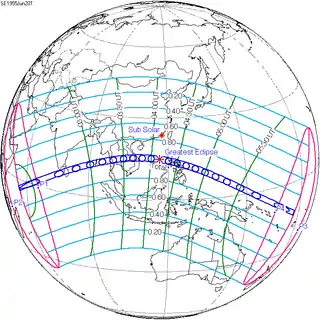 June 20, 1955 |
| 138 | 140 | 142 | 144 | 146 |
 April 8, 1959 |
 January 25, 1963 |
 November 12, 1966 |
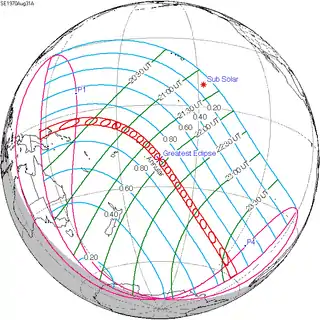 August 31, 1970 |
 June 20, 1974 |
| 148 | 150 | 152 | 154 | |
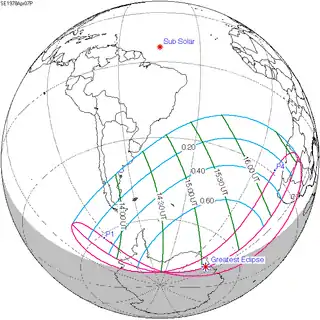 April 7, 1978 |
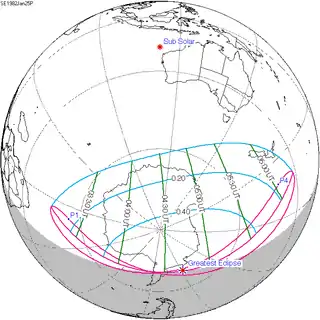 January 25, 1982 |
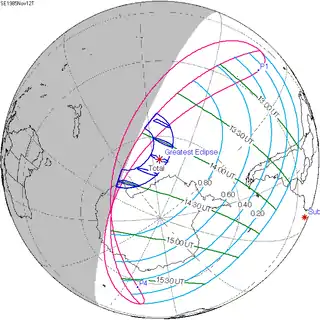 November 12, 1985 |
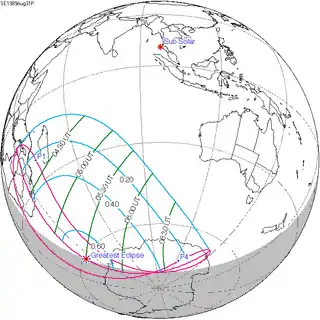 August 31, 1989 | |
Notes
- ↑ van Gent, R.H. "Solar- and Lunar-Eclipse Predictions from Antiquity to the Present". A Catalogue of Eclipse Cycles. Utrecht University. Retrieved 6 October 2018.
- ↑ "Saros Series catalog of solar eclipses". NASA.
References
- Earth visibility chart and eclipse statistics Eclipse Predictions by Fred Espenak, NASA/GSFC
.jpg.webp)

